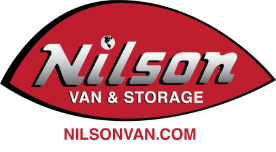Moving to a new office can feel overwhelming, but it can also be an exciting opportunity for growth and innovation. Whether you’re transitioning to a larger space or a more efficient small office layout, settling in requires strategic planning and a bit of creativity. Here are six tips to help you embrace your new office layout and return to business as usual.
1. Understand the New Office Floor Plans
Before the move, familiarize yourself with the new office floor plans. Understanding the layout will help you visualize the location of each department or team. This knowledge is crucial for planning the placement of furniture and equipment, ensuring efficient workflow. Consider how different areas like meeting rooms, break areas, and individual workspaces will interact with each other within the new space.
2. Embrace a Creative Office Design
Moving to a new space is the perfect opportunity to rethink your workspace. A creative office design can boost morale and productivity. Think about incorporating elements that reflect your company’s culture and values. This could mean open-plan spaces for collaboration, quiet zones for focused work, or a lounge area for relaxation. The goal is to create an environment where employees feel comfortable and motivated.
3. Prioritize Essential Set-Up
When you first move in, focus on setting up the essentials to maximize your new office layout. This includes IT infrastructure, phones, and basic office furniture. Ensuring these critical components are up and running will allow your team to start working as soon as possible and reduce downtime.
4. Encourage Employee Input
Involve your employees in the settling-in process. They can offer valuable insights into optimizing the new office layout for their productivity and comfort. This can include suggestions for arranging their personal workspaces or ideas for communal areas. Employee involvement can help create a more functional space and aids in making the team feel valued and a part of the change.
5. Consider Hiring a Professional Moving Company
Consider hiring a professional moving company for a seamless transition to your new location and office space. These experts can handle the logistics of moving, from packing to transportation, ensuring that everything arrives safely and on time. They can also provide short-term warehousing solutions, which can be incredibly helpful if your new office is not ready to house all of your items immediately. This service provides a secure space to store your belongings until you are ready to move them into your new layout, reducing clutter and allowing you to set up your office in phases.
6. Take Time to Adjust
Give yourself and your team time to adjust to the new office layout. Getting used to the new environment and workflow may take a few weeks. Be patient and open to making small tweaks in the layout as you settle in.
Moving to a new office is a significant milestone for any business. By following these tips and embracing the possibilities of a new office layout, you can ensure a smooth transition and a positive start in your new environment. To get your move off to the right start, don’t wait to enlist the help of a reliable, experienced moving company. Contact your experienced commercial relocation team at Nilson Van and Storage to get a free quote.




